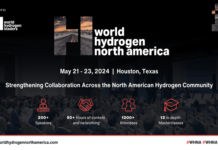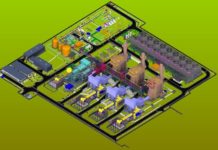The plant is located adjacent to Suncoast’s macadamia nut processing facility in Gympie.Ergon Energy’s unit, Powerdirect Australia, and Suncoast signed an agreement to build the plant. Construction of the 1.5MW plant was started in May 2003 and completed in September 2003. An investment of $3m was made to the construction of the plant. The facility reached full operational capacity in 2005-2006.
The plant generates 9.5GWh annually, which is enough to power 1,200 households. Suncoast consumes 20% of the electricity generated and the remaining is exported to the grid. The plant helps in reducing 9,500t of greenhouse gas emissions annually, which is equivalent to keeping 2,000 cars off the roads.
Powerdirect Australia was responsible for providing the plant technology. Suncoast provides operational support and supplies the nut shells. Maintenance and repair of the plant is handled by Powerdirect.
In February 2007, Powerdirect Australia was acquired by AGL Energy. As part of the acquisition, ownership of the Suncoast cogeneration facility was transferred to AGL.
Development of macadamia nut renewable energy
“The plant generates 9.5GWh annually, enough to power 1,200 households.”Australia’s Federal Government imposed a legal obligation which required electricity producers to generate 2% of their electricity from renewable sources by 2010. To achieve this, Ergon Energy studied various options and found power generation from waste macadamia nut shells to be a feasible option.Australia is one of the largest macadamia nut producers in the world, with a 45% market share.
There are more than 13 million macadamia nut trees in Australia and the number is steadily growing.Processing of macadamia nuts produces the rock hard outer shell as a by-product. As the demand for macadamia nuts increased, the volume of waste nut shells as by-products was also increasing.
The burning quality of a macadamia nut shell is similar to that of black coal and brown coal. Ergon Energy, therefore, decided to build a plant which would utilise the waste nut shells to generate electricity. Ergon approached Suncoast to use the waste nut shells produced at its plant in Gympie.
Suncoast is a co-operative owned by 140 macadamia nut farmers and is Australia’s leading producer of macadamia nuts. Its processing plant in Gympie produces 5,000t of waste nut shells annually. The shells were earlier diverted to landfill, used as garden mulch or burned to produce heat. The cogeneration facility increased the energy efficiency of the processing plant by utilising the waste nut shells.
Queensland plant details
The Gympie plant features a 6MW steam boiler which produces high pressure at 40bar and 380-400°C. Power is being generated by a 1.5MW steam turbine. The facility uses 1,680kg of waste nut shells to produce 1.5MW of electricity in one hour.SE Power Equipment and Queensland Boilers were the contractors for the plant.
Boiler technology
Macadamia nut shells are burnt in the self-contained steam boiler to generate steam. The boiler was specially designed to ensure uniform burning of the waste nut shells.
“The burning quality of a macadamia nut shell is similar to that of black coal and brown coal.”
Some of the shells have high energy and others have low energy. The boiler was, therefore, built to identify these changes. A computer control monitors the temperature and pressure in the boiler and makes adjustments accordingly.
The boiler produces 9t of steam per hour, which is passed through a heat exchanger that heats up water. Some of the heat is used to reduce the water content in the macadamia nut kernels placed in storage silos.The remaining steam is passed through the steam turbine chamber to generate electricity.
Steam coming out of the turbine room is passed to a condenser where it is condensed into water. The condenser returns the water into the feed system for boiling, where the process is repeated.
Grid network
The plant is connected to an 11kV local grid network through a 2MVA transformer.













































